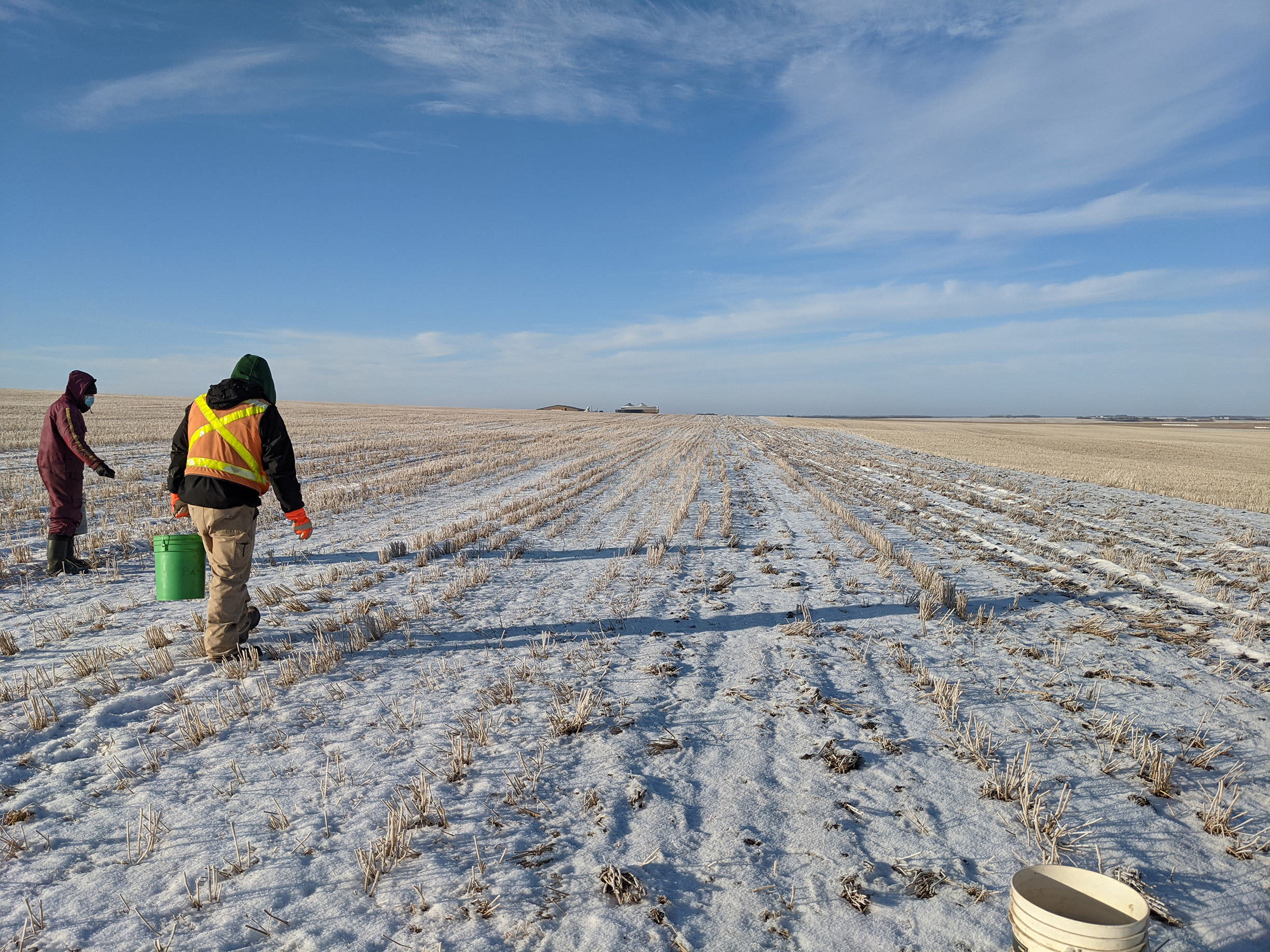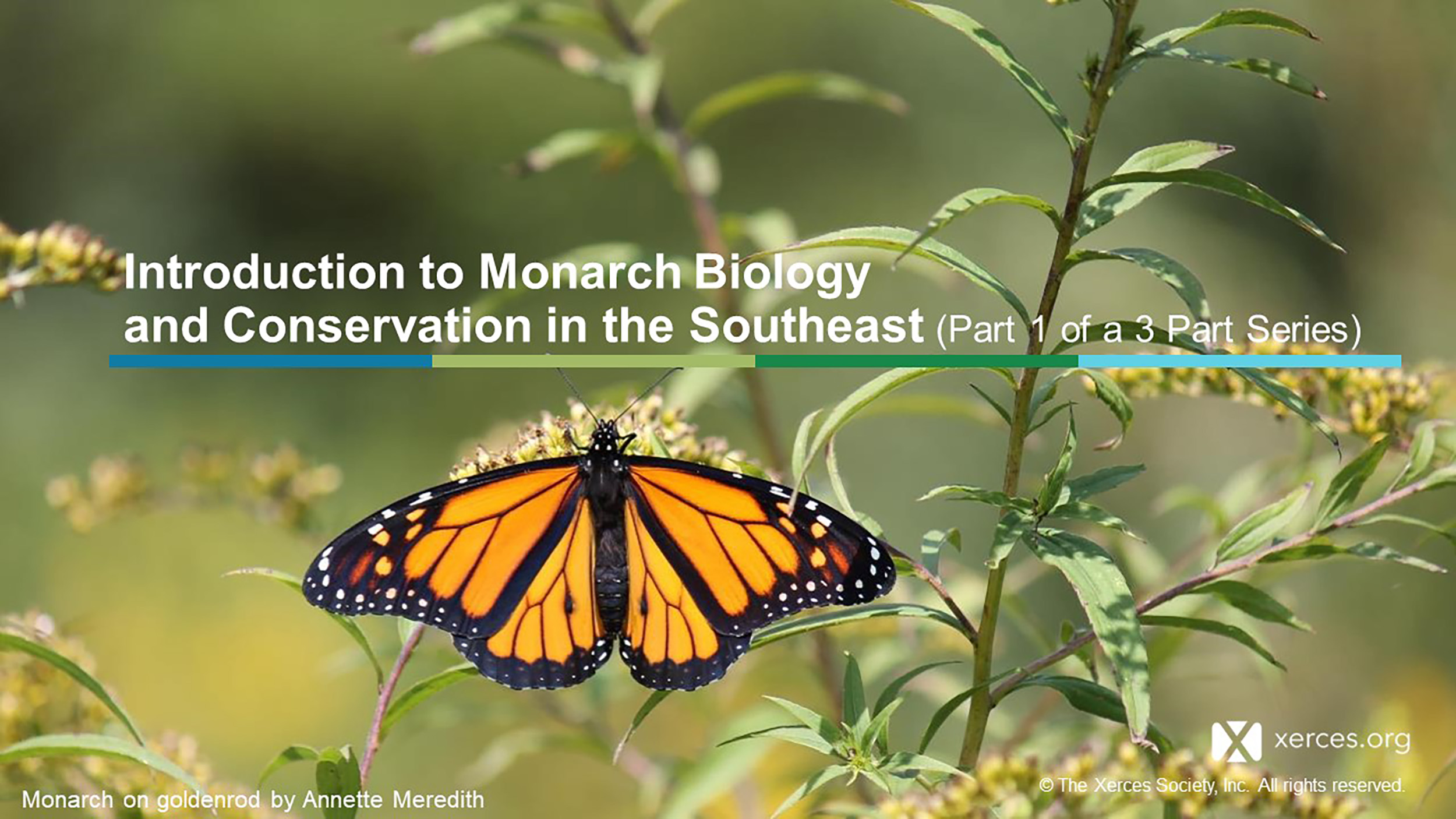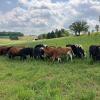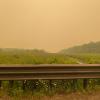Select updates from our team of restoration ecologists, entomologists, plant ecologists, and researchers.
The Xerces Society manages the largest pollinator conservation program in the world. We work with people from all walks of life to create habitat for bees, butterflies, and other beneficial insects—and hundreds of thousands of acres of flower-rich habitat have been planted. We also offer certifications: Bee Better Certified for farmers and food companies who are committed to supporting pollinator conservation in agricultural lands, and Bee City USA and Bee Campus USA for cities and colleges dedicated to making their community safer for pollinators.
With staff based in more than a dozen states, and offering a diverse array of expertise, it can be challenging to summarize the impactful work being done. We compile updates from pollinator team members into regular digests. In this bumper edition, three of our staff provide updates. Stephanie Frischie discusses planting seeds, Emily May introduces a newly released video, and Nancy Lee Adamson highlights monarch conservation in the Southeast.
Planting Seeds for the Future
Stephanie Frischie
When we talk about planting seeds, sometimes, we mean that literally. Sometimes, we mean it metaphorically. In this pollinator digest, I am going to talk about both.
In late 2020, through the Cheerios–Xerces Pollinator Habitat program, we literally planted seeds. These were used for pollinator and beneficial insect habitat on twenty farms in Manitoba. In this round of planting, we chose a combination of native species such as prairie onion, heartleaf golden alexanders and heath aster and “tame” nonnative species like annual sunflowers, red clover, and alsike clover. In this mix, some species will grow and bloom quickly and others will take more time to develop and then be there for years to come. The habitat is multipurpose because it provides several benefits on the farms: food and shelter for wildlife, natural pest control by beneficial insects, a place for native pollinators to nest and find food in between the times they pollinate crops, windbreaks, cycling soil nutrients, reducing erosion and holding soil moisture, to name a few. These habitats are also multipurpose because they are serving as experimental plots for research by a team at the University of Manitoba that is studying which insects use the habitat and how far they move into the crop fields.

Manitoba farmers in the Cheerios–Xerces Pollinator Habitat program sow their native seed mix by hand broadcasting. The snow will keep it in place and winter conditions will help the seeds come out of dormancy and be ready to germinate in the spring. (Photo: Karen Klassen, Faspa Farm.)
Now for a project where the seed sowing is metaphorical.
Farming with Soil Life is a publication and series of online courses that we’ve been working on for nearly a year, and it will sprout out into the world in late-winter 2021. The handbook contains profiles of over seventy invertebrate groups that live in the soil and the role they play in soil health and soil ecosystems. There are chapters on the farming practices that support soil invertebrates and those that threaten them as well as a section on how to observe and measure these creatures. Over the course of the year, we will present “Farming with Soil Life” online workshops for ag professionals and farmers in eight regions of the Northeast.
Literally or figuratively, planting seeds is a hopeful step towards new growth.

Soil-dwelling invertebrates such as centipedes play an important role in maintaining soil health, and are the focus of a new initiative from the Xerces Society. (Photo: Xerces Society / Jennifer Hopwood.)
New Video: Bring Back the Pollinators
Emily May
Bees and other pollinators are critical for producing the food we eat and for sustaining the world's natural ecosystems. But pollinators face many threats to their survival, including loss of habitat, pesticide use, climate change, and diseases. Pollinator conservation is a big task, but you can contribute to solutions for pollinators with the four simple steps outlined in our Bring Back the Pollinators campaign and pollinator protection pledge: growing pollinator-friendly flowers, providing nest sites, avoiding pesticides, and spreading the word.
To help communities and individuals get started on their pollinator conservation journey, we’ve developed a new video that provides a quick introduction to how and why we should Bring Back the Pollinators. The video combines footage of pollinators and their habitats with digital animation to explore the lives and value of North American pollinators and the major threats to pollinator survival. It also offers simple solutions for pollinator conservation that anyone can implement in their own communities. This short video is meant to be an educational tool for those wanting to spread the word about native pollinators to friends, neighbors, students, and local communities!
You’ll find it on our YouTube channel along many other educational videos and webinars. Check it out—several new videos are added each month.
Monarchs Can Use Your Help in the Southeast, too!
Nancy Lee Adamson
Do you want to help us understand more about monarchs overwintering in the southeastern US and the plants they use in while in the region? Or maybe simply learn more about what we do know about monarchs in the southeast? Here are some ways in which you can do both!
Help us Understand Monarchs Through Community Science
Plants Important for Monarchs in the Southeast
Xerces seeks help documenting plants that support monarchs, especially in the Southeast. Please share your observations of nectar plants used by monarchs. Observations from across the continent are welcome, but we would especially appreciate hearing from those of you in the Southeast (for which we have few records). Adding nectar plant and milkweed observations to iNaturalist.org is also tremendously helpful for regional conservation.
Overwintering (in 2021!) Monarchs in the Southeast
Journey North, Monarchs Across Georgia, and researchers and natural resource managers in Georgia are asking for help documenting sightings in Alabama, Florida, Georgia, Louisiana, Mississippi, North Carolina, South Carolina, and Texas. To join the effort:
- Step 1: Create a free account with Journey North at journeynorth.org/reg.
- Step 2: Learn how to report monarch sightings at journeynorth.org/monarchs.
- Step 3: Submit monarch observations from December–March (for this study, but observations welcome year-round) at journeynorth.org/sightings.

Xerces staff collaborated with Sudie Thomas of South Carolina NRCS to develop and present a three-part series of webinars on monarchs in the southeast. Recordings are available to watch online.
Learn More About Monarchs and Their Habitat Needs in the Southeast
Xerces-NRCS partner biologists (myself and Ray Moranz) collaborated with South Carolina Natural Resources Conservation Service (NRCS) Wildlife Biologist Sudie Daves Thomas to develop a series of three webinars about monarch habitat needs in the Southeast. These also include highlights of biologist Billy McCord’s groundbreaking work on overwintering monarchs in South Carolina. Slides and additional resources are posted with the video replays:
- Introduction to Monarch Biology and Conservation in the Southeast covers monarch biology basics (food requirements, natural enemies, migration, etc.), their status (how monarch populations are doing), and (very briefly) how diverse NRCS practices support monarchs, other wildlife, and farm production.
- Essential Aspects of Monarch Habitat in the Southeast covers southeastern milkweeds (including several genera besides Asclepias) for larvae, nectar plants for adults, and field research conducted in coastal South Carolina by Billy McCord that will knock your socks off!
- Establishment and Management of Habitat for Monarchs and its Value for Other Wildlife (in the Southeast) is a bit more geared toward NRCS and covers NRCS monarch wildlife habitat evaluation guides (WHEGs), NRCS conservation practices that can support monarchs, seed mix development (and seed calculators). Ray also shares myth-breaking finds regarding milkweeds and livestock.
Xerces’ Resources on Monarchs, Milkweeds, and Nectar Plants
Xerces works to protect the monarch across North America and has many resources and programs to better understand and conserve populations throughout its range. Our regional milkweed guides and nectar plant guides include beautiful factsheets, and a 100-page manual, Milkweeds: A Conservation Practitioner’s Guide, provides detailed guidance on growing and using milkweed in restoration projects. Our newest program, part of Project Milkweed, will help provide difficult-to-find milkweeds for the western monarch populations that have declined precipitously.
Your work as community members documenting monarchs, their host and nectar plants, and all of the other insects that inhabit those plants helps ensure a healthy community for all of us—thank you!!!

These two fact sheets about milkweeds in Florida and the Southeast are part of a nationwide series. They can be downloaded from the Xerces Society website.
Further Reading
Learn more about the Xerces Society’s Pollinator Conservation Program.
Find out how you can help Bring Back the Pollinators.
Check out our YouTube channel for videos, talks, and webinars.





